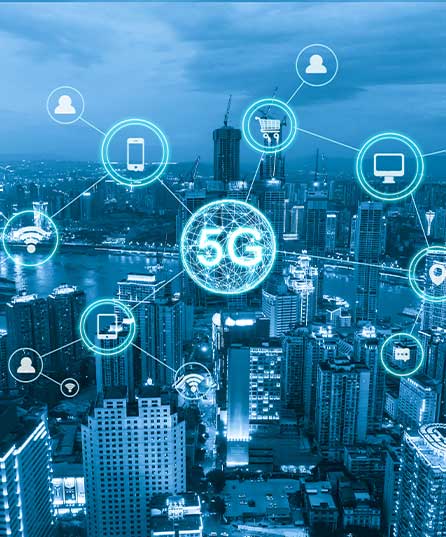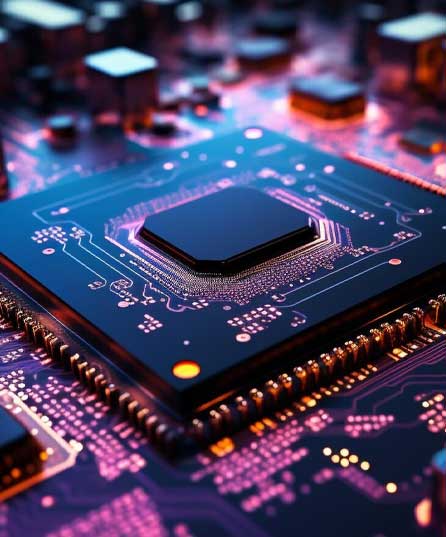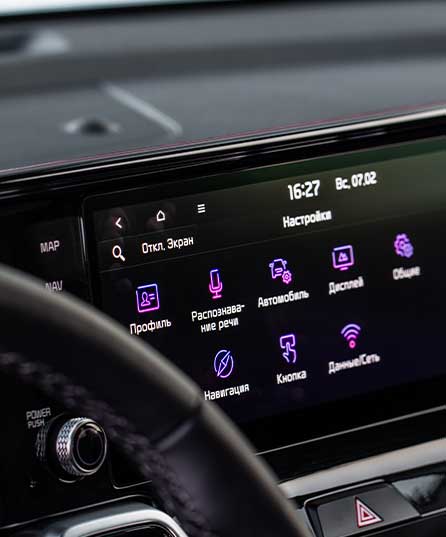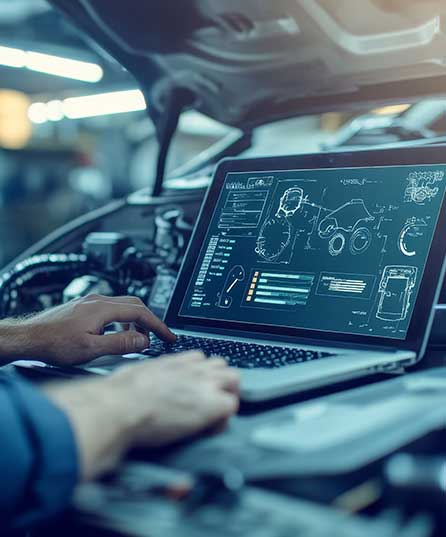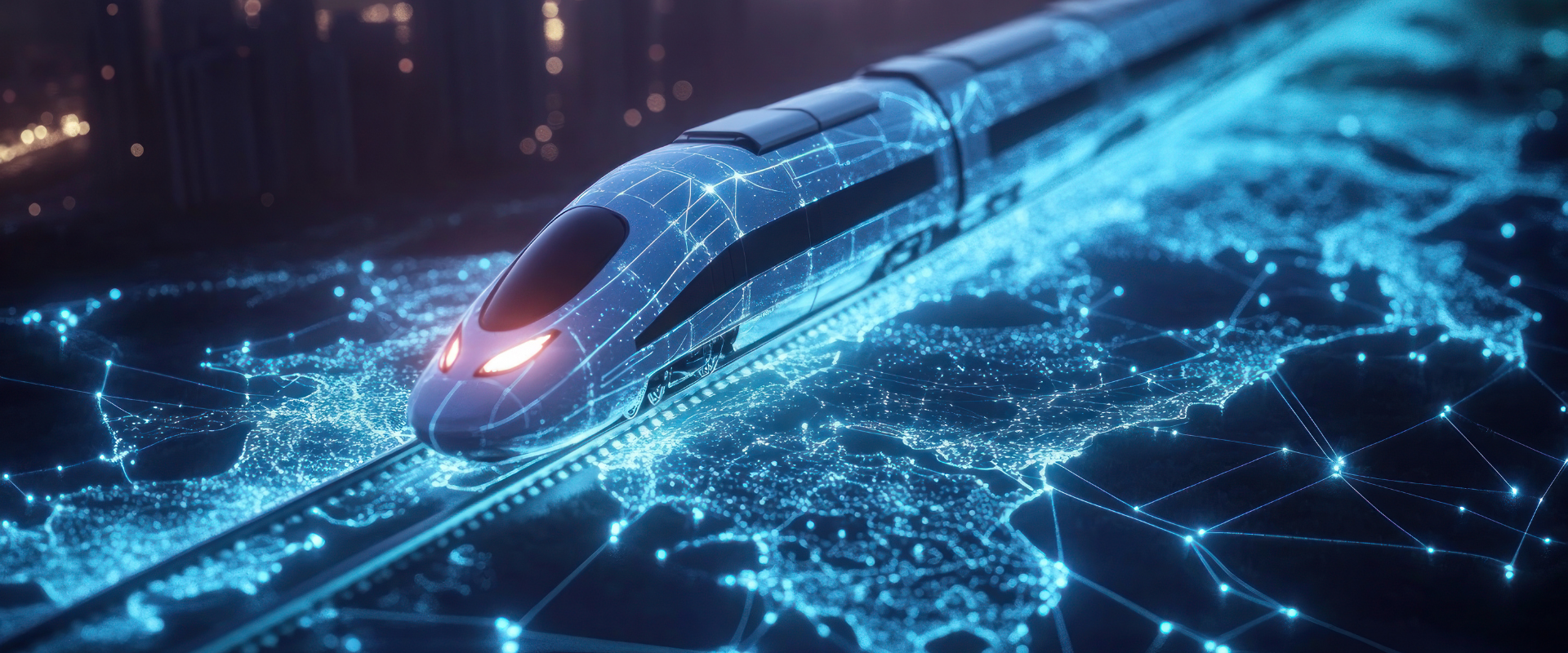
Executive summary
Rail operations worldwide reflect an industry pursuing digital rail transformation. Operators continuously modernize aging infrastructure, expand networks, and upgrade systems while navigating workforce transitions and rising customer expectations for faster, comfortable, secure, and sustainable rail solutions. Rail organizations are making substantial investments in technology advancement and rail operational excellence to meet these evolving demands.
The breakthrough comes when rail organizations keep up with the digital innovation pace, especially where it translates into measurable operational improvements through AI in rail systems. Quest Global’s extensive Class 1 railroad experience and deep understanding of rail data and industry use cases create the foundation for collaborative partnerships with railroads. Quest Global has been working collaboratively with rail OEMs for decades in design and engineering, signaling, operations and maintenance, testing and validation, digitization and modernization. Our teams combine domain expertise with technology specialists to build predictive maintenance applications, computer vision in rail systems that accelerates inspections, and intelligent rail operations tools that optimize performance.
Rail leaders recognize that as networks, signaling, and operations become increasingly automated through rail safety technology, their experienced workforce requires additional support to work effectively with these sophisticated systems. While automation delivers the speed and reliability customers expect through rail travel innovation, organizations benefit from solutions that help their operational teams leverage these advanced technologies to their full potential.
The new opportunity landscape
Rail organizations have established solid foundations through predictive maintenance systems, asset monitoring, and fleet management platforms. These implementations demonstrate the industry’s commitment to technological advancement, yet they represent just the beginning of what’s possible with contemporary AI capabilities. The challenge varies significantly across global markets. US freight operators manage extensive networks built decades ago, requiring solutions that work within existing infrastructure constraints while maximizing asset utilization. India’s rapid rail expansion creates opportunities to integrate advanced technologies from the ground up, particularly in urban mobility projects across tier-one and tier-two cities. Meanwhile, much of Asia continues developing basic rail capabilities, though regions like China and Japan set benchmarks for high-speed and urban transit innovation.
The transformation of rail operations with AI
These diverse market conditions create unique opportunities for organizations leading AI innovation. Success requires deep industry understanding combined with technical capabilities that can adapt to different operational contexts and infrastructure realities. The next decade will belong to rail operators who can bridge current capabilities with emerging AI technologies, building systems that address today’s challenges while preparing for the complex demands that lie ahead.
AI beyond digital
Enhancing safety with computer vision
Rail organizations have invested significantly in digital infrastructure including sensors, dashboards, and connectivity platforms. The next evolution involves accelerating the pace of technology adoption to match rapid AI advancements. Rail operators recognize they need to move faster from data collection to intelligent action, where AI transforms existing digital infrastructure into dynamic systems that continuously learn, predict, and optimize. Computer vision systems exemplify this evolution from digital monitoring to intelligent analysis. While many routine inspections still require human oversight, AI can handle substantial portions of visual inspection tasks that currently consume significant time and resources. Advanced systems process hundreds of component images through object detection, classification, segmentation, and defect detection models, completing thorough analysis in minutes rather than hours. Depth data creates detailed point clouds, generating precise 3D models for analyzing corrosion, wear, and structural damage. Human-in-the-loop systems keep experienced inspectors at the center of critical safety decisions while AI manages routine analysis tasks. The result combines human expertise with machine efficiency, maintaining safety standards while cutting inspection time significantly.
Intelligent applications in rail systems
Similar intelligent applications extend across rail operations. The operational impact becomes measurable when AI applications address real rail challenges beyond data collection. Predictive maintenance systems don’t just alert operators to potential failures; they optimize maintenance schedules based on actual asset condition, operational demands, and resource availability. This evolution from digital monitoring to intelligent optimization enables rail operators to move from reactive crisis management to proactive operational excellence, where technology serves operational needs rather than generating more data to manage.
Operational impact
Quest Global’s experience with building digital products for OEMs and large freight railroads demonstrates how intelligent systems translate into measurable operational improvements across critical rail functions. Rolling stock condition monitoring uses computer vision systems with trackside and train-mounted cameras to inspect wheels, brakes, axles, and undercarriage components. These systems provide 360-degree railcar analysis, processing component images through detection models that identify defects human inspectors might miss. Machine learning algorithms, including Support Vector Machines (SVM), Convolutional Neural Networks (CNN), and Artificial Neural Networks (ANN), detect point machine failures and analyze train acceleration responses for potential component failures before they occur. Track monitoring applications use vision analytics to detect cracks, misalignments, and structural issues with precision impossible through manual inspection. These systems process operating and health data from various devices to provide real-time recommendations directly to operational crews.
Predictive maintenance and operational excellence
Predictive maintenance systems forecast equipment failures, while just-in-time spare parts management reduces inventory costs without compromising reliability. Machine learning integration extends to planning systems, including trip planning, yard planning, and maintenance scheduling. Supply chain disruption prediction helps ensure freight delivery on schedule with minimal cost escalations, improving reliability and availability while reducing operating costs.
Central dashboards consolidate operational data with machine learning recommendations, creating unified platforms that manage train operations in real-time. These systems integrate data from signaling and train control systems, delivering actionable insights directly to crews. The result is a transformation from reactive crisis management to proactive operational excellence that delivers measurable improvements in reliability, availability, and cost performance across rail networks.
Exponential returns
The true power of intelligent rail systems emerges through network effects, where improvements in one operational area amplify benefits across entire systems. Central dashboards consolidating data from thousands of assets with real-time machine learning insights create operational visibility, enabling proactive decision-making. Asset performance optimization scales across networks, where lessons learned from one route apply to similar operational contexts throughout the system. Customer experience enhancement through operational excellence creates competitive advantages that compound over time as service reliability improves and costs decrease. These improvements generate self-reinforcing cycles where enhanced data quality enables better AI performance, generating more accurate insights that improve operational decisions. Each optimization creates data feeding back into the system, enabling continuous improvement and adaptation to changing conditions.
AI improvements cascade through rail operations. Better signaling systems deliver precise train timing data, enabling maintenance teams to optimize work schedules. Delays decrease, service improves, and additional data becomes available for further operational enhancements. Future-proofing occurs through continuous learning systems that adapt to evolving requirements without complete technology replacements. These systems build institutional knowledge, remaining accessible even as workforce transitions occur, preserving operational expertise through digital systems that learn and improve over time.
The role of AI in sustainable rail solutions
Environmental considerations increasingly drive rail decisions as operators position themselves as the lowest carbon transportation option. AI-driven optimization reduces energy consumption through intelligent scheduling that minimizes empty miles and optimizes power usage patterns. Smart maintenance scheduling prevents unnecessary component replacements, extending equipment lifecycles while maintaining safety standards. Quest Global’s energy management systems analyze consumption across operational scenarios, identifying reduction opportunities without compromising performance or safety.
Why global rail leaders choose Quest Global
Rail transformation requires partners who understand both the operational complexities of moving freight and passengers safely and the potential of advanced technologies to solve real problems. Quest Global brings deep rail engineering experience spanning decades of work with rolling stock, signaling, and infrastructure systems. This operational knowledge combined with AI capabilities ensures solutions address real rail challenges effectively. The technology portfolio reflects this dual expertise. AI accelerators like QAI enable generative AI-based test case generation, while ThirdEye vision analytics, Asset Performance Management, and Fleet Management systems are built specifically for rail deployment use cases. These aren’t generic AI tools adapted for rail; they’re purpose-built solutions that understand how trains operate, how components fail, and when interventions deliver maximum value. Digital documentation automation through Digidoc and intelligent chatbots demonstrates how AI can streamline administrative processes while maintaining operational focus.
Strategic partnerships with technology leaders, including Nvidia for digital twin development and major cloud providers, ensure access to the latest capabilities while maintaining rail-specific applications. The ecosystem approach enables holistic solutions from edge devices processing trackside data to cloud analytics optimizing network-wide operations. The result is an innovation partnership that goes beyond traditional vendor relationships, providing proven accelerators and frameworks that reduce implementation risk while delivering measurable operational improvements.
Roadmap to intelligent rail systems
Successful rail AI transformation follows a systematic approach, managing risk while building capabilities progressively. Phase one focuses on high-impact applications like condition monitoring and basic predictive maintenance, demonstrating value while building organizational confidence. Phase two integrates advanced analytics and dashboard consolidation, extending capabilities into operational decision-making. Phase three enables network-wide deployment with integrated planning systems, leveraging previous experience for sophisticated applications.
Building AI-ready foundations requires attention to data quality, secure implementation frameworks, workforce development, and partnership ecosystems. Generative AI opens new possibilities through specialized models trained on rail-specific data, while legacy modernization using large language models supports application migration to modern platforms.
Seizing the opportunity for rail transformation
Rail leaders understand the pressures they face daily. Customer expectations continue rising while infrastructure ages and experienced teams approach retirement. These converging forces create both opportunity and urgency for rail organizations ready to transform challenges into competitive advantages. The path forward doesn’t require revolutionary changes overnight. Early adoption of intelligent systems can help establish superior operational capabilities, better asset utilization, and enhanced customer experiences. The advantages build over time as AI systems learn and improve, creating increasingly valuable operational insights.
Success requires partners who understand both rail operational realities and AI potential. The goal is building capabilities that preserve institutional knowledge while creating new operational advantages. Rail networks of the future will be data-driven, sustainable, and secure, built through intelligent systems that enhance critical transportation services. The opportunity to lead this transformation exists today.
Download this article as PDF




